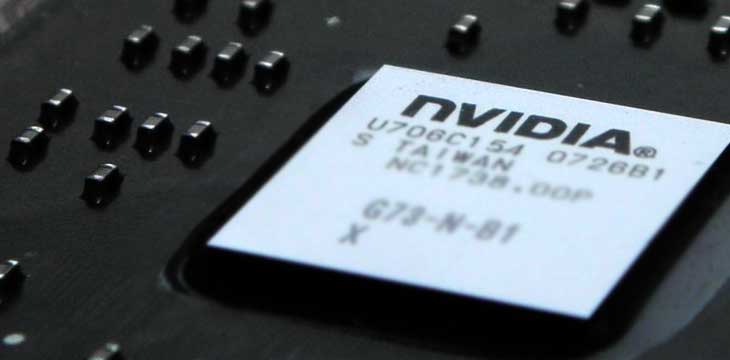|
Getting your Trinity Audio player ready...
|
After the drastic effects caused by a sharp decline in the demand for cryptocurrency mining equipment, Nvidia has posted a 17% growth in its revenue in the last quarter. The California-based chipmaker announced that it generated $2.58 billion in revenue in the last fiscal quarter, up from $2.22 billion in the previous quarter.
Nvidia was one of the many global chipmakers that greatly benefitted from the surge in demand for crypto mining equipment a year ago. The company’s graphic processing units (GPUs) registered a sharp uptake, with the company posting $3.12 billion in revenue over the same period in the previous financial year. However, the crypto winter of 2018 took its toll on crypto miners, leading to an expected decline in Nvidia’s revenues.
Colette Kress, the Nvidia chief financial officer, believes that the company has finally recovered from the crypto mining hangover. She told analysts:
Essentially our business is normalized. We’ve reached normalized levels through the last couple quarters and this quarter, just very similar to what we will see going forward. We feel really good about sequential growth, we have sequential growth across all of our platforms.
Despite the positive results, the company is yet to fully recover from the after effects of the crypto winter. The revenue is still down 17% compared to the same period a year ago. For the upcoming quarter, the firm predicts the revenue will hit $2.9 billion, give or take 2%.
The GPU line continues to be Nvidia’s biggest money maker, contributing 81% of the company’s total revenue at $2.1 billion. The company’s automotive business was its best performer, beating analysts’ projection of $177 million to hit over $200 million. According to Kress, the performance was due to “one big development-services deal being recognized in the quarter,” warning that the revenue for this line could be lumpy moving forward.
In January, three law firms announced that they were suing Nvidia for allegedly misleading investors about its ability to cope with weaker demand for crypto mining equipment. The class-action lawsuit further accused Nvidia of masking slowing growth in its business by “continuing to push mid-range GPUs into the channel, which caused inventory levels to skyrocket and ultimately left NVIDIA with over three months of excess inventory in its channel.”

 12-24-2025
12-24-2025 




